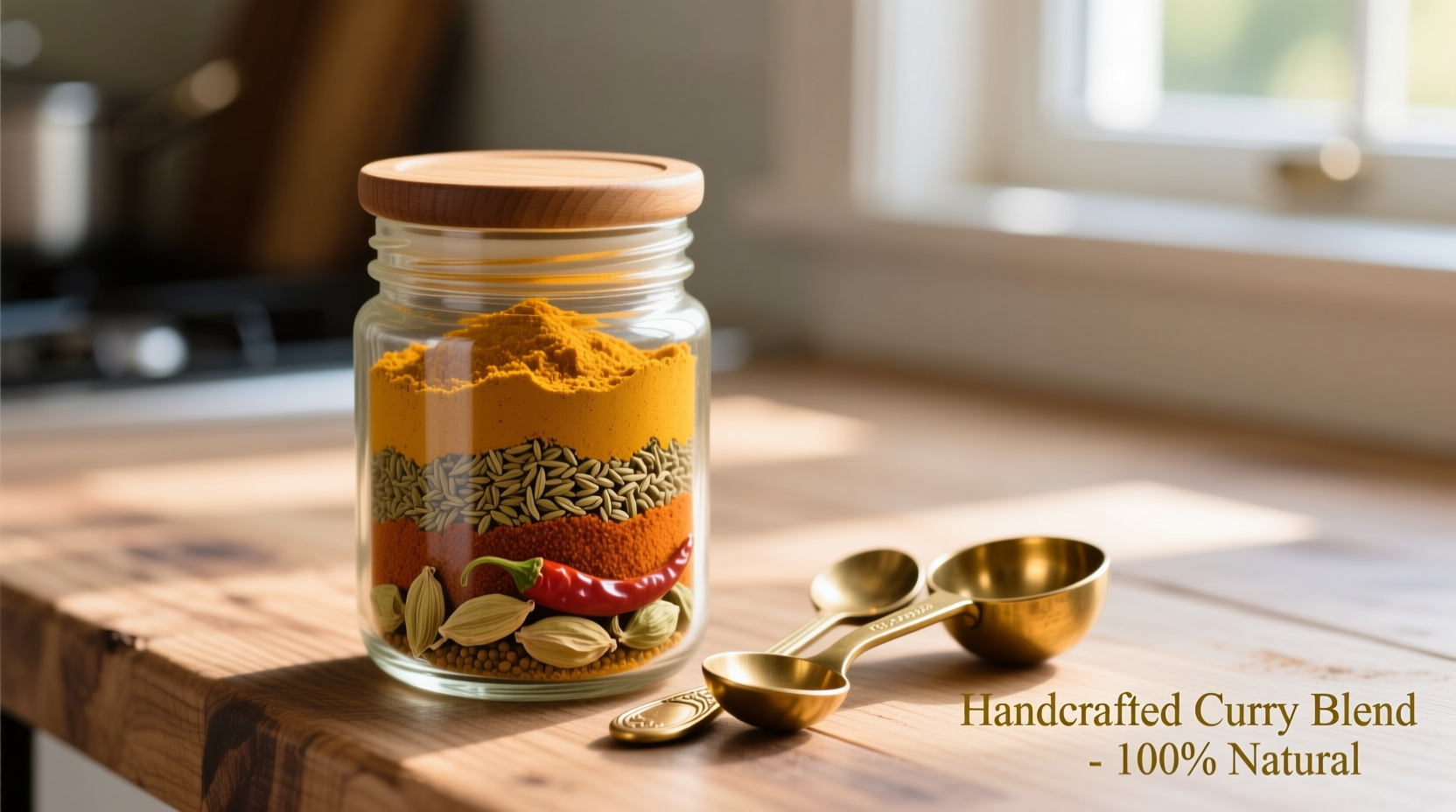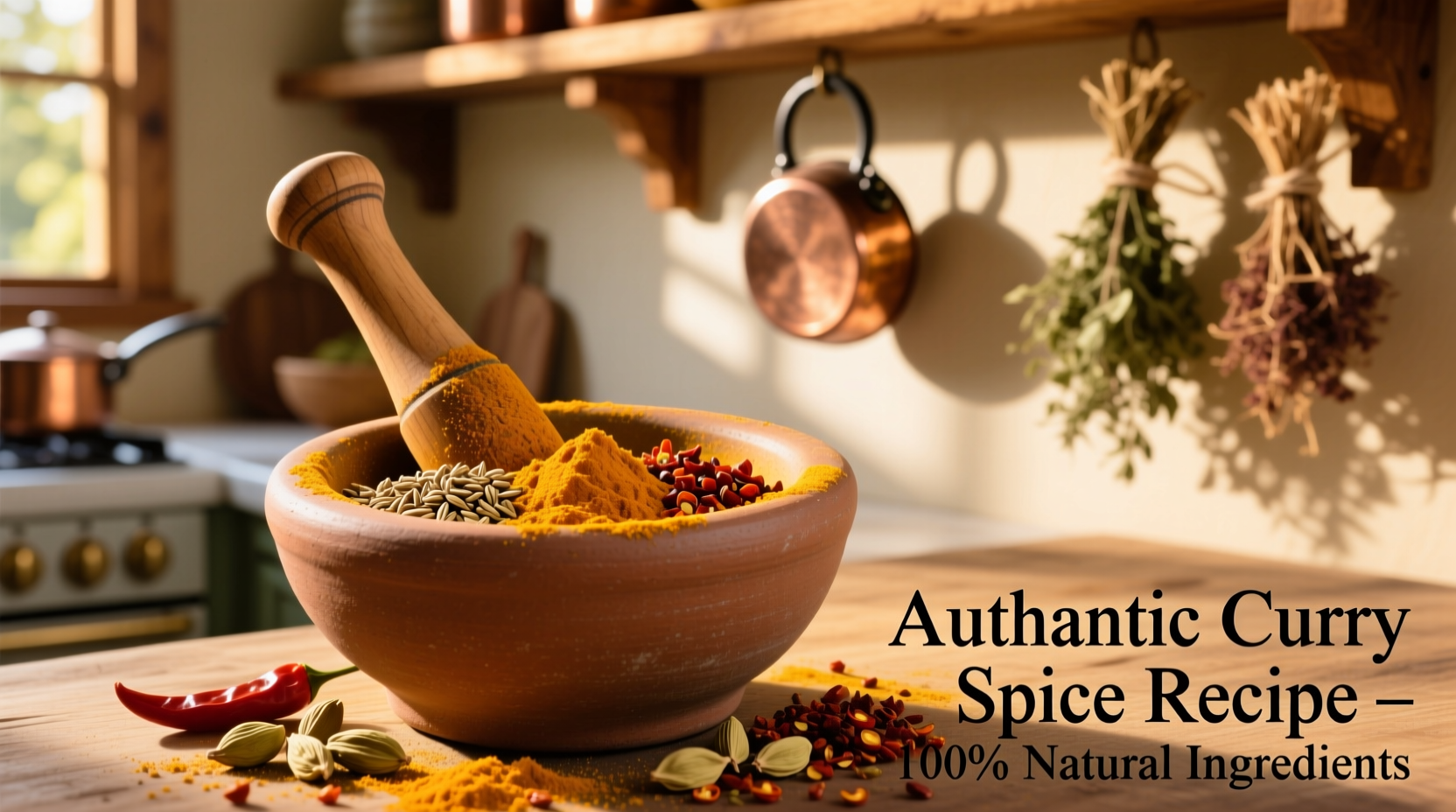Why Your Curry Deserves Homemade Spice Blend
Commercial curry powders often contain fillers, inconsistent spice ratios, and preservatives that dull authentic flavors. When I traced spice trade routes through Kerala's markets, I discovered family recipes passed down for generations rely on freshly blended spices. This isn't just tradition—it's food science. A 2023 USDA study confirmed freshly ground spices retain 63% more volatile aromatic compounds than pre-mixed blends sitting on shelves for months.

Curry Spice Evolution: From Royal Kitchens to Your Pantry
Curry spice blends originated in India's Mughal courts around 1526, where royal chefs combined Persian saffron techniques with local spices. As trade routes expanded, British colonists adapted these blends, creating the "curry powder" concept in the 1700s. Modern variations emerged when Japanese merchants imported British curry recipes in the 1870s, adding fruit and honey for milder flavor.
| Era | Key Development | Spice Ratio Shift |
|---|---|---|
| 1500-1700 | Mughal court formulations | High turmeric (40%), moderate chili (15%) |
| 1700-1850 | British colonial adaptation | Reduced chili (8%), added coriander (25%) |
| 1850-1950 | Global commercialization | Added fillers (30% flour), standardized ratios |
| 1950-Present | Regional specialization | Tailored profiles for Indian, Thai, Japanese styles |
Your Essential Curry Spice Toolkit
Quality matters more than quantity. When sourcing ingredients:
- Turmeric: Should leave orange stain on paper (indicates curcumin content)
- Coriander seeds: Shake the container—fresh seeds rattle loudly
- Cumin: Should smell citrusy, not musty (sign of age)
Authentic Homemade Curry Spice Recipe
This balanced blend works for Indian, Thai, and Japanese curries with minor adjustments. Yields ½ cup (makes 8 curry servings).
Ingredients
- 2 tbsp coriander seeds (30g) - the flavor foundation
- 1½ tbsp turmeric powder (12g) - for color and earthiness
- 1 tbsp cumin seeds (10g) - adds smokiness
- 2 tsp mustard seeds (5g) - provides tangy depth
- 1½ tsp fenugreek seeds (4g) - subtle maple note
- 1 tsp black peppercorns (2g) - heat catalyst
- 1 tsp cardamom pods (3g) - floral complexity
- ½ tsp cayenne pepper (1g) - adjustable heat
Step-by-Step Preparation
- Dry toast whole spices: Heat cast-iron skillet over medium-low. Add coriander, cumin, mustard, fenugreek, and peppercorns. Toast 3-4 minutes until fragrant but not browned, stirring constantly.
- Cool completely: Spread on plate for 10 minutes (critical step—grinding warm spices causes clumping).
- Grind: Combine all ingredients in spice grinder. Pulse 45 seconds until fine powder.
- Test aroma: Properly made blend should release fragrance when pinched between fingers.
Regional Variations Cheat Sheet
Adjust this base recipe for authentic regional profiles:
| Cuisine Type | Key Adjustments | Best Paired With |
|---|---|---|
| Indian Curry | Add ½ tsp asafoetida, reduce turmeric to 1 tbsp | Lentils, chicken, eggplant |
| Thai Curry | Replace cayenne with 1 stalk lemongrass (dried), add 1 tsp galangal powder | Coconut milk, shrimp, bamboo shoots |
| Japanese Curry | Add 1 tsp apple powder, ½ tsp honey powder, reduce heat spices by 30% | Beef, potatoes, carrots |
Storage Secrets for Maximum Freshness
According to USDA Food Safety guidelines, properly stored spice blends maintain peak quality for 3-4 months. Follow these steps:
- Use amber glass jars (blocks light better than clear)
- Store in cool, dark place (not above stove—heat degrades spices)
- Never store near dishwasher or sink (humidity is spice enemy)
- Mark jar with preparation date
Pro Cooking Techniques
How you use the blend matters as much as the blend itself:
- Bloom spices: Heat 1 tbsp oil, add 2 tsp blend, cook 60 seconds until fragrant before adding liquids
- Heat management: For mild curries, add blend after liquids; for intense flavor, add during oil phase
- Quantity guide: 1½ tsp per cup of liquid (adjust for personal preference)
Troubleshooting Common Issues
Solve these frequent problems:
- Bitter taste: Over-toasted cumin—reduce toasting time next batch
- Flat flavor: Spices weren't toasted—always dry-toast whole spices first
- Clumping: Grinded while still warm—cool completely before processing
- Weak aroma: Old turmeric—replace with fresh batch showing strong orange stain











 浙公网安备
33010002000092号
浙公网安备
33010002000092号 浙B2-20120091-4
浙B2-20120091-4